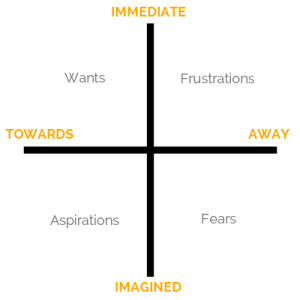7 STEPS TO CREATE AN UNLIMITED MARKETING BUDGET
By SHWETA JHAJHARIA, THE LONDON COACHING GROUP
Is your mind-set holding back your marketing? In my experience, business owners often have three flawed beliefs that keep them from successful marketing:
- Marketing is a big cost.
- We should market to as many people as we possibly can.
- We should ‘get our name out there’.
You may look at those and say, “Of course – because they’re true.” Well I have years of experience in marketing and I can tell you right now that if you continue thinking along those lines, your marketing will go nowhere.
Instead, follow these 7 steps, and you’ll find yourself churning out marketing that brings in quality leads and – importantly – recovers its own costs.
Step 1: Define Measurable Marketing Objectives (MMOs)
Measurable is the key word here – put a number to it. Get as specific as you can about the who, where, what and how.
An example, for a flooring installation business, might be:
“Generate 75 qualified leads from interior designers in Q2 for core flooring installation services.”
You may ask, how do you determine that number? Well the best place to start is to align them with your Measurable Business Objectives (MBOs) – which should also be specific. These have to align, otherwise what is the point in your marketing?

Step 2: Tightly define your “who”
In the example from the previous point, you may think that they’ve got their target market clear: interior designers. Actually, I would call that a loose target. Yes, loose.
When you think of your marketing, don’t think of it as marketing to a crowd of people. Think of it more like you are communicating to an individual – just doing it many, many times.
In order to create that unlimited marketing budget you don’t need to figure out your target market but rather your target person. That is; who is the ideal person for you to sell your product to? What does this person like? What are the common problems this person faces? How does this person communicate?
If you can’t immediately think of who that person is, here are a few rules of thumb:
- He/She should be a raving fan of your business solution.
- He/She should be easy to reach.
- He/She should provide a high average value to you.
- He/She should be likely to provide repeat business.
- He/She should have an effective lead time.
A good place to start is to choose one of your current or previous clients or customers that was perfect. Start by writing down whatever you know about them, and build around that.
That would just be a beginning. The best way to build a good ideal person is to interview someone that represents your ideal target person – then you get real facts rather than making up things that simply may not be true.
Step 3: Define how you’ll communicate with them
You need to step inside your ideal target person’s shoes and figure out what makes that person tick. This is vital to your marketing because without knowing this, he/she simply won’t respond to you.
The thing you need to do is be able to know what their problem is, and then express that problem better than they can. If you can do that, then you have already won them.
An easy way to map this out is to use a graph that goes from imagined to immediate on one axis and towards and away on the other axis.
You then have four quadrants where you can fill in problems associated with this person.
1) Immediate Away – These are the “Frustrations” i.e. the things happening right now that your person wants to stop. You should have about three of these.
2) Immediate Towards – These are the “Wants” i.e. the things that the person would like to have happening right now. You should also have three of these.
3) Imagines Away – These are the “Fears”. You should think of this as being made up of the three frustrations– i.e. something they’re afraid that if those frustrations continue, this will be the final result.

4) Imagined Towards – These are the “Aspirations”. Again, the three wants should make up an aspiration – somewhere that the person wants eventually to end up.
When you map it out this way, you can then consider the different issues in each quadrant and how to approach them.
Step 4: Work out the acquisition costs
Now lets turn the money on its head. When you are creating a marketing budget, you must first think about the allowable budget to acquire a client. This is something that most business owners totally miss.
The idea here is to figure out how much you are allowed to spend in marketing to get a client or customer. You do this by figuring out the gross profit of your products. That is, taking the price that you’re selling your product for and taking away the variable costs involved in producing it i.e. the production costs and the other costs of sale (but excluding the general overheads).
That gross profit then becomes the absolute maximum that you have to spend in acquiring your customer.
Depending on your business, the price of your product and the costs you have, your gross profit will be different.
In the flooring example, let’s pretend the average order value is £800, and the gross margin (the percentage of sales that is gross profit) is 30% of that, then there’s £240 that can be spent on marketing strategies to acquire one interior designer – that is their allowable acquisition cost.
They could go a step further and figure out the lifetime value if they know, from their business numbers, that the ideal interior designer will buy from them two times during a year. The budget then goes up to £480 – because they are pretty sure that acquiring one interior designer will give them £480 x 2 gross profit in total.
Based on your risk appetite, your budget can just keep going up.

Step 5: Choose your channel, offer & cost
If you aren’t a corporate yet, then your primary focus needs to be on brand activation, rather than awareness.
What that means is that every piece of marketing you do should have a clear call to action (CTA) with a strong reason. The best and most effective way of achieving this is to bundle an offer with the CTA.
In the cluttered SME market, your prospects need to have a strong reason as to why they should get in touch with you, rather that someone else in your sector.
An example can be something as simple as, “Get a £200 voucher towards your next order when you call us at XXX.”
You then need to decide how much you’re spending and what channel you’re using. Don’t take a stab in the dark – measure this carefully.
You should use the allowable acquisition costs you worked out earlier and compare it to the actual acquisition costs that you work out by figuring out how many clients you will get according to the conversion rate of that channel.
Once you work out the profit you’re gaining from a channel, and take away the cost of that channel, you’ll get your gross profit and figure out which channel makes the most sense, and which ones need improving.
Step 6: Measure the return on your marketing investment
Once you’ve chosen your channel and run a campaign you then need to measure the return from your marketing investment. You need to figure out what the actual numbers are.
You’d use the same calculations as you used to determine which channel was better, but with the actual numbers that have come from your campaign. Find out the conversion rate that’s happening for you.
Importantly, find out what the final net position is. Is it positive? If so – then do it again and again and again. You have just created an unlimited marketing budget.
Step 7: Automate your unlimited budget spend
Now that you have found a strategy that works and continue over and over, it’s time to systemise it.
You should explore automation tools to see if there are automated systems that can help your systemise the approach. Otherwise, you should train your team so they can maintain the process with minimal input from you.
Once that’s sorted out you can then leave that to operate by itself, while you spend your time seeking out further sources of unlimited marketing budget.
About the Author
Shweta Jhajharia, Principal Coach and founder of The London Coaching Group, is a multi- award-winning business coach, recognised both by external bodies and the industry awards panels as the top coach in the UK. Despite competitive economy, her clients across sectors consistently achieve measurable double digit growth (over 41%) and are the most awarded client base in UK. See: http://www.londoncoachinggroup.com
Twitter: https://twitter.com/Londoncoachingg
Facebook: https://www.facebook.com/BusinessCoachingLondon
Google+: https://plus.google.com/+Londoncoachinggroup
LinkedIn: uk.linkedin.com/in/shwetajhajharia/
